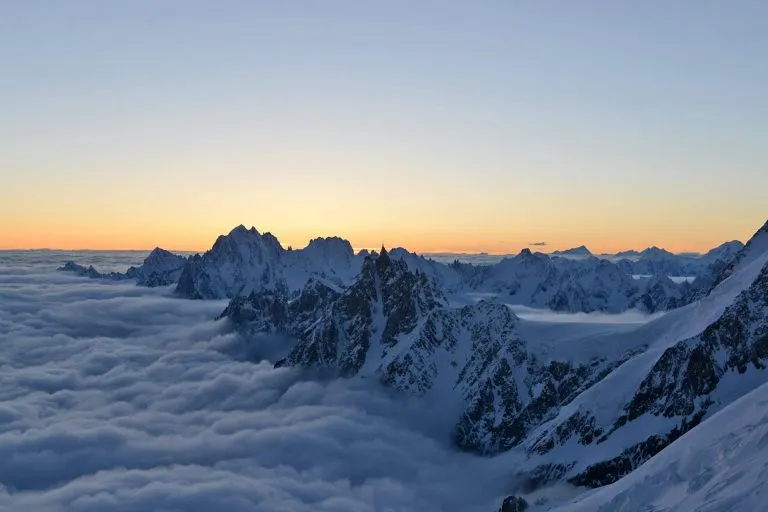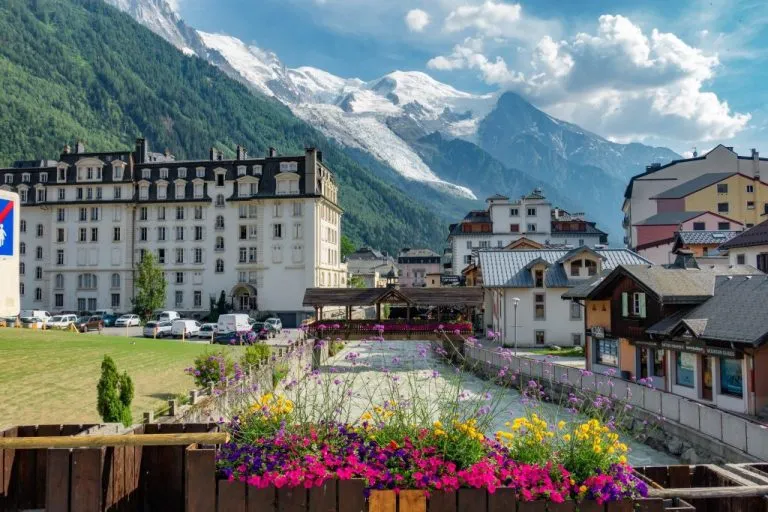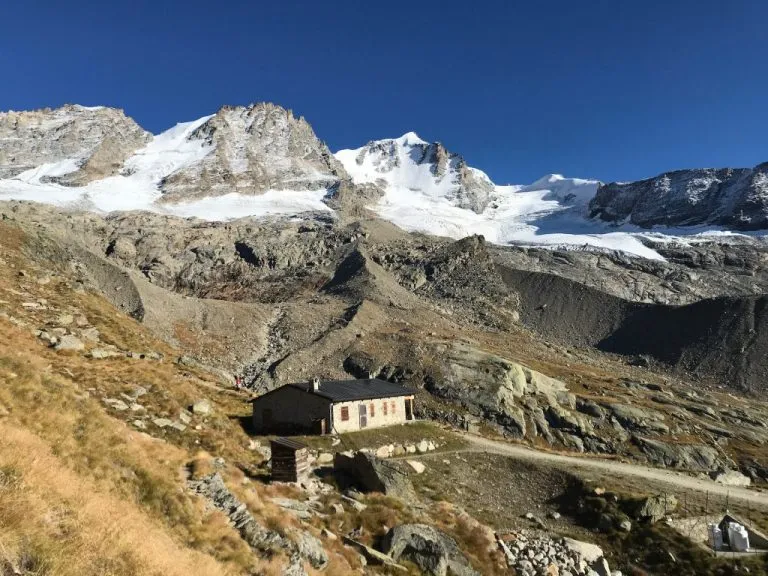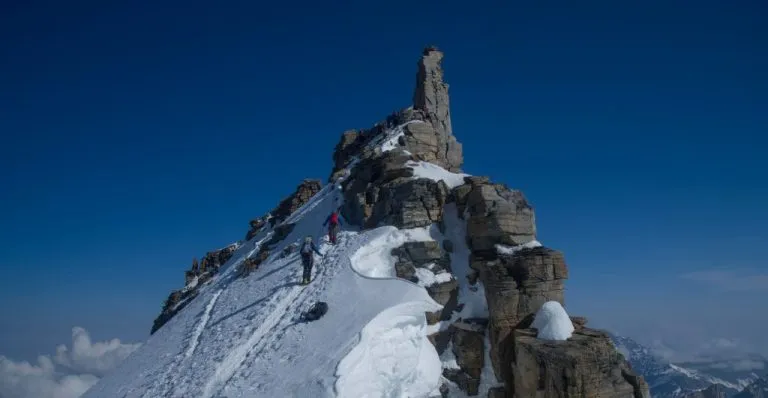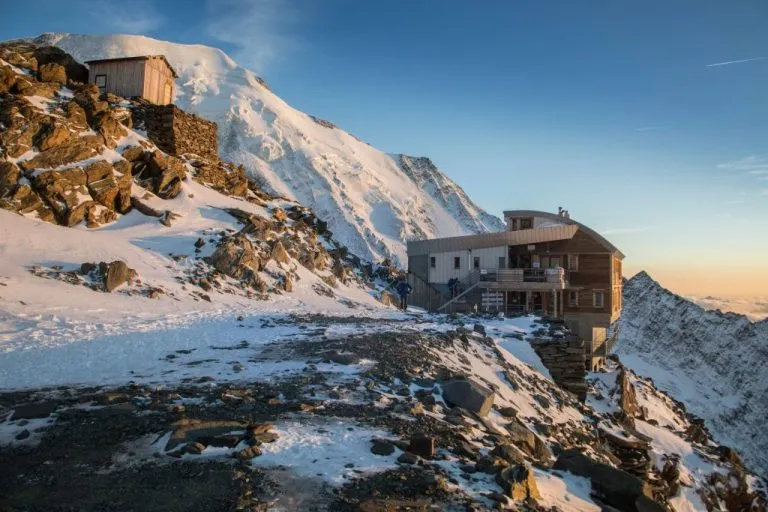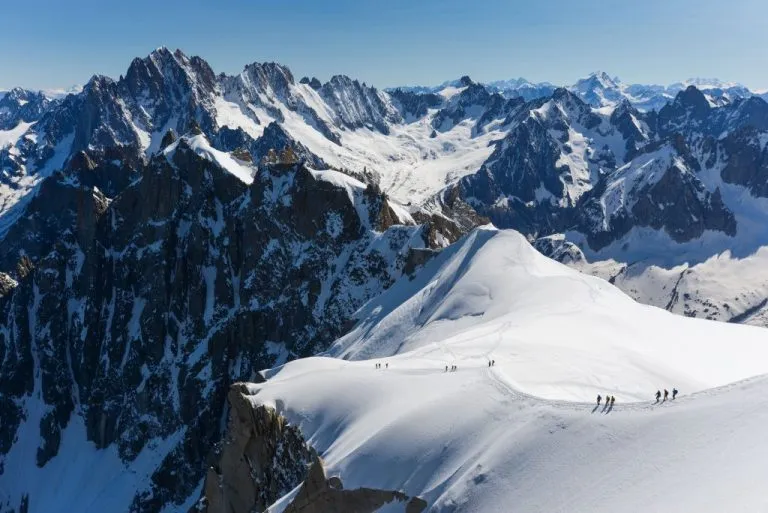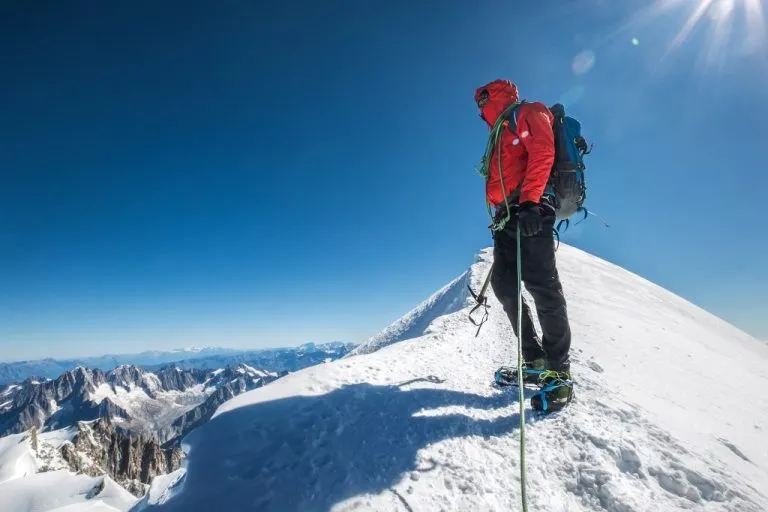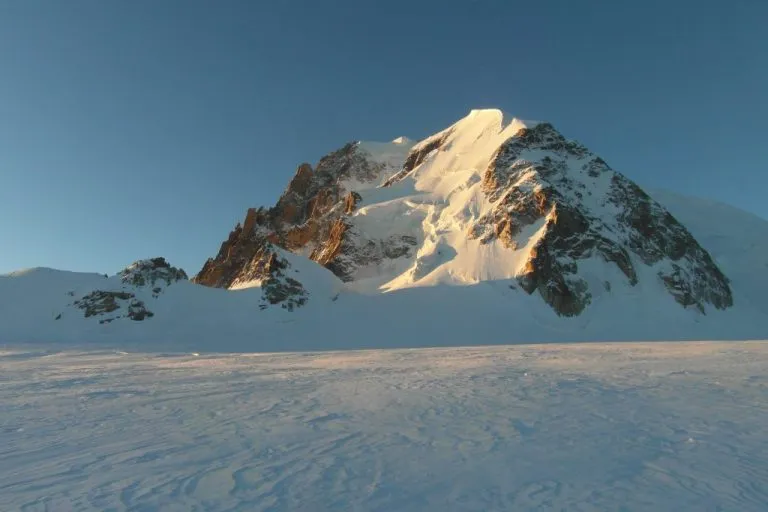Mont Blanc is the highest peak in the Western Alps (arguably in the whole of Europe). With 4808 meters of elevation, it is also one of the most popular peaks in the world. More than 20,000 people try to summit Mont Blanc each year.
If you’re one of those and in need of guidance, scroll no further — here is everything you need to know about climbing Mont Blanc.

How dangerous is it?
It depends on how you define danger. In itself, Mont Blanc is less dangerous in comparison to some other more difficult Alpine peaks. And thousands of people summit it each year.
But it is also the mountain with the highest fatality rate in Europe, with over 100 people perishing over the course of a season. The reason is not the mountain’s technical difficulty but the overall unpreparedness of the people who try to climb it.
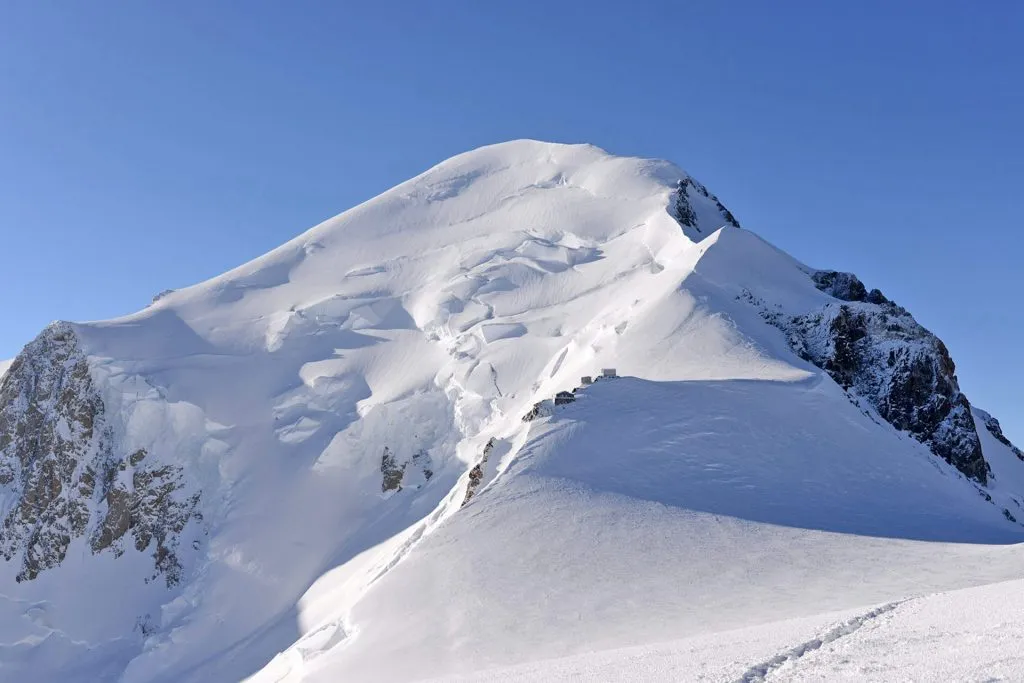
There are lots of novices and other inexperienced mountaineers who try to do it without a guide. Even though Mont Blanc is not difficult for those with more experience under their belt, it is still a high-altitude mountain covered in snow. And any mountain like that can be fatally dangerous, so you better be aware of all of its risks.
Some of the dangers include:
- Steep, icy and exposed routes
- Rockfall in the Grand Couloir
- Falling into crevasses
- High-altitude sickness
- Unpredictable weather
- Avalanches
If you don’t know how to deal with these, climb Mont Blanc with a mountain guide. You and the local rescue services will both appreciate it.
When to go climbing Mont Blanc?
The European summer season — from June to September — is the best time to do it. That’s when the huts are open and the conditions are the most optimal.
There are some early-season ski attempts possible in April, but anything earlier than that is not advisable. In winter, temperatures are cold, huts are closed, the days shorter, and the increased amount of snow also means increased danger. If you’re reading this, please don’t attempt climbing Mont Blanc in winter.

Weather
In the peak season, temperatures on the route range anywhere from +20°C at the starting point to -20°C at the summit. Summer temperatures in the valley are usually from 15 to 25°C. The higher parts of Mont Blanc can also experience extremely strong winds.
What is desirable for the most optimal conditions are clear skies, cold temperatures, and as little wind as possible. Clear skies and no wind are straightforward, while the cold might seem contra intuitive. The reason cold temperatures are better than being too warm is for the snow to freeze over at night, making it more compact for climbing and reducing the chance of rockfall.
How crowded is it?
Estimates for how many people climb Mont Blanc each year range from 20,000 to 30,000. Most of those ascents come in the summer season when there will be up to 200 people per day on the slopes of Mont Blanc in the months from June to September.
You can’t avoid this — Mont Blanc is a busy mountain. But don’t let that stop you. It’s also a big mountain, so it should very rarely feel too crowded.
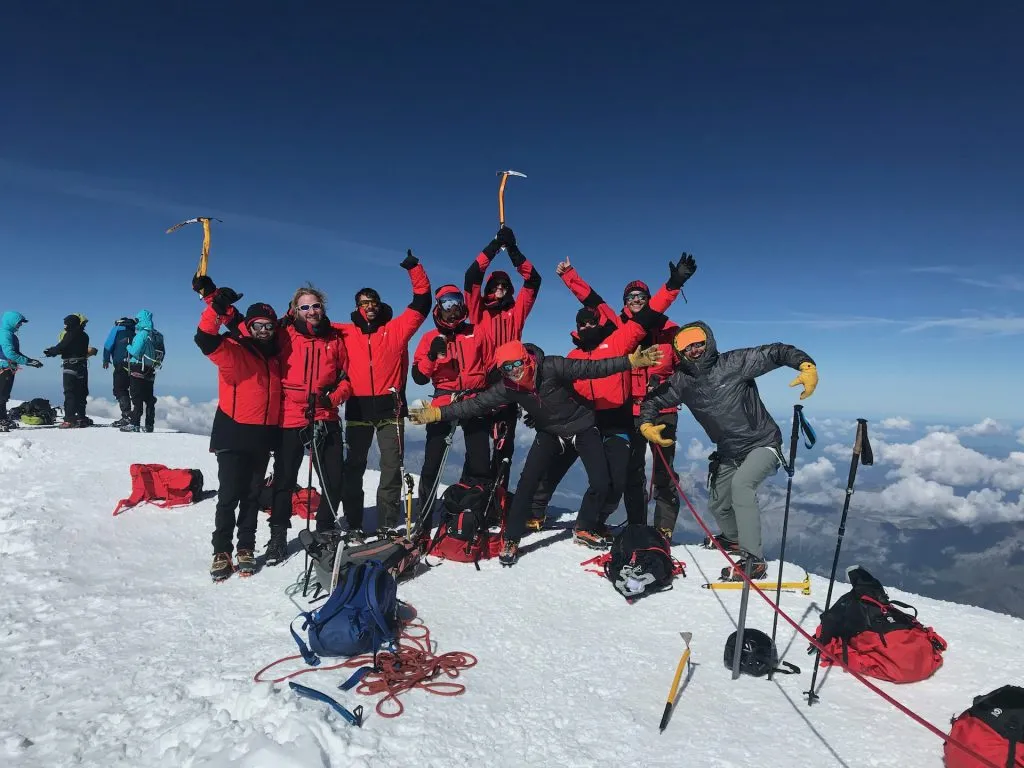
Of course, if you want to increase the chance of meeting fewer people, climb in June or in September. But be aware that finding the day with the right conditions in those months is harder because the weather is more changeable. Accordingly, plan to climb Mont Blanc in these months with increased caution.
Mont Blanc Climbing Routes
There are lots of different routes up to Mont Blanc, reaching it from many different sides. That’s why it sometimes feels difficult to choose the right route for you.
The less experienced and skilled you are, the fewer routes are available for you when climbing Mont Blanc. That should be the main factor when choosing a route — if you can do it.
If you just want to experience the beauty of the Mont Blanc massif, without the inherent risk of high-altitude mountaineering, you can also check the circular multi-day hiking route Tour du Mont Blanc.
Where should I start from?
The two main summer routes (+main skiing one) for climbing Mont Blanc start in France. There are also other routes to the peak, including some that start in Courmayeur, Italy.
The best place for a base of your climb is Chamonix, France. It can be easily reached via shuttle or bus from the Geneva airport. It is also where there are the most professional guides, which you can book to accompany you on the climb.
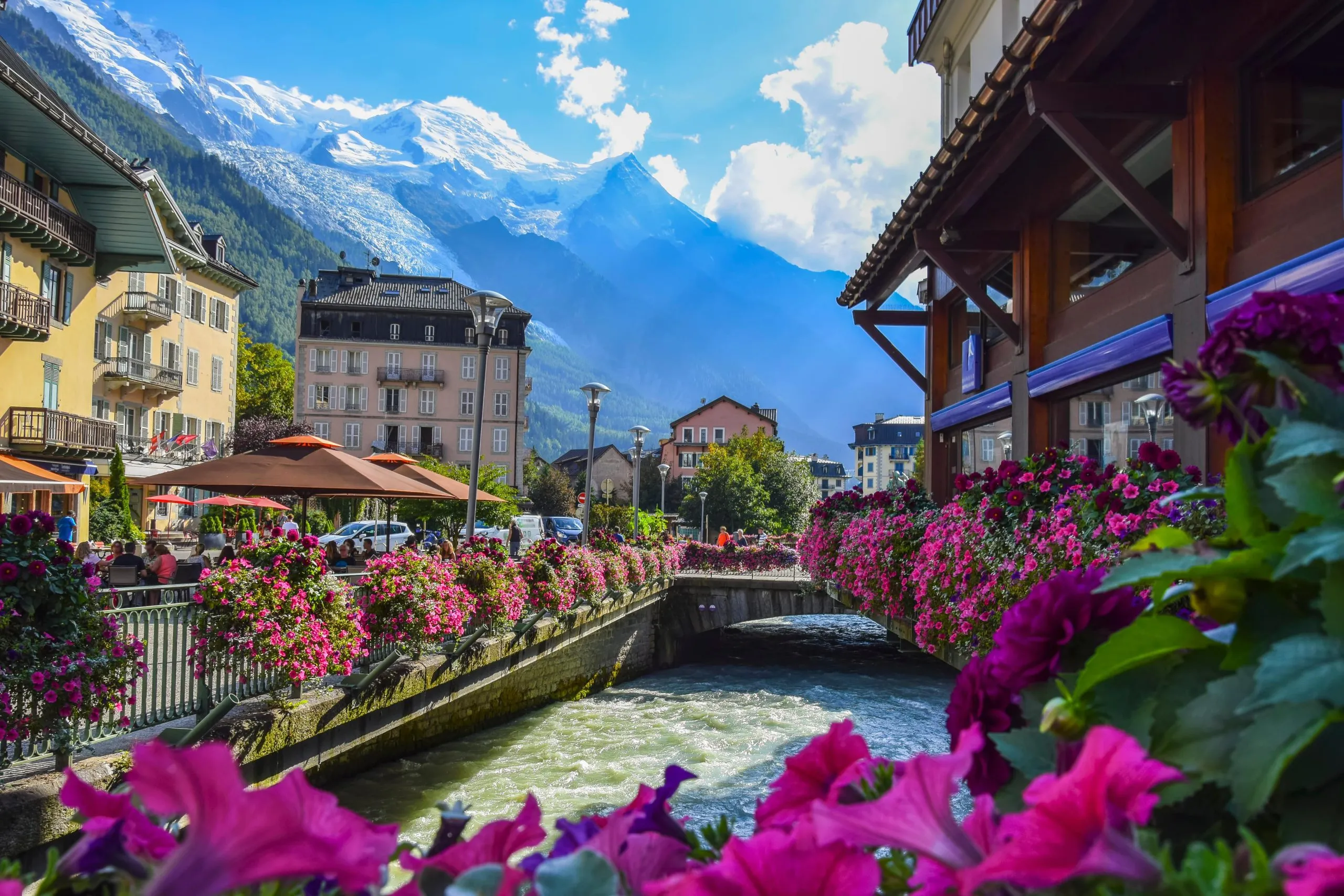
The Gouter “Normal” Route
- Technically least difficult
- Most popular route
- Can get crowded on peak days
The Gouter Route is the most popular route to Mont Blanc, hence it’s named the “classic route”. It is also the least technically demanding with only some scrambling on the way to the Gouter Hut.
The climb usually starts after taking the cable car from Les Houches to Bellevue, and then the mountain railway towards Nid d’Aigle (2,372 m). After that, you start the ascent towards one of the two huts on the route. The views of the Chamonix valley and the surrounding mountains are astounding.
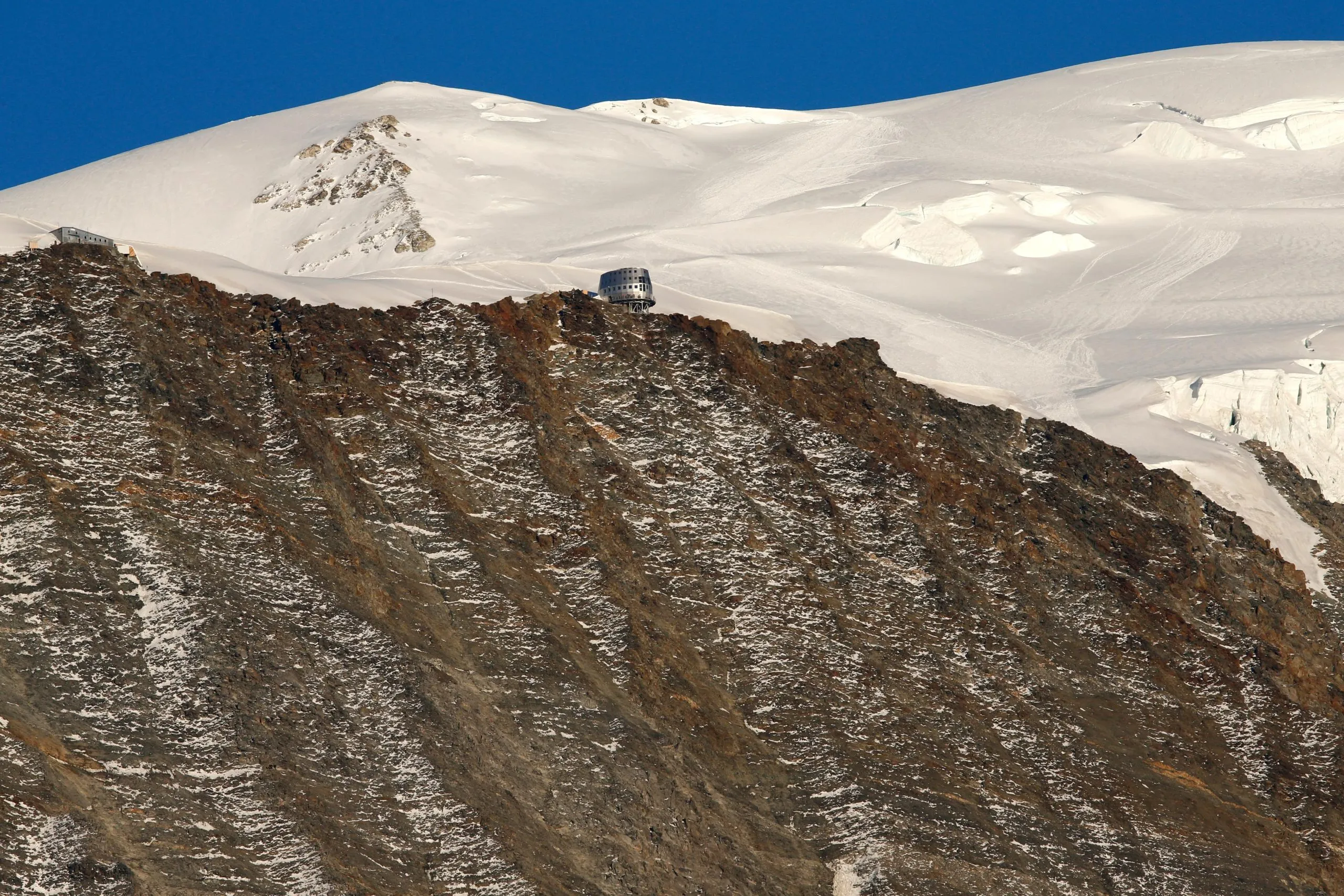
The most difficult and crucial part of the hike is right after the Tete Rousse Hut, where you’ll be crossing the Grand Couloir. This large gully is very prone to rockfall, especially when the temperatures get higher later in the day. What follows is a scramble towards the Gouter Hut, the highest hut in the Alps.
From there on there is only snow. First, you need to cross the glaciers, pass the Vallot emergency shelter, and then follow the Bosses ridge right to the summit of Mont Blanc.
Important! From 2019 onwards, there is a daily quota of 214 people climbing the Gouter Route. Everyone that wants to climb Mont Blanc via this route in more than 1 day has to make hut reservations in advance.
Huts on the route:
- Refuge de Tête Rousse (3167 m)
- Refuge du Goûter (3835 m)
Starting Point: Les Houches
Distance (one-way): 9 km
Elevation gain: 2400 m

Trois Monts Route via Cosmiques Hut
- Less elevation gain, but more technically challenging
- Longest summit day
- Requires 1:1 guide ratio
This route is named like that (Trois Monts means “Three peaks”) because it touches three summits — Mont Blanc du Tacul, Mont Maudit and Mont Blanc.
Although it has fewer kilometers and elevation gain than the Normal route, it is more technically challenging. And you need to do most of it in one day. It passes under some dangerous seracs and avalanche-prone terrains, which makes it the safest in the cold early hours of the day.
This ascent starts with the ride on the cable car from Chamonix toward Aiguille du Midi (3,842 m). Most people then choose the safest option and sleep at nearby Cosmiques Hut, from where they start in the night en route towards Mont Blanc. That way, the snow is still compact and easier to climb, while the risk of avalanches is lower.
Huts on the route:
- Refuge des Cosmiques (3613 m)
Starting Point: Chamonix
Distance (one-way): 8 km
Elevation gain: 1500 m
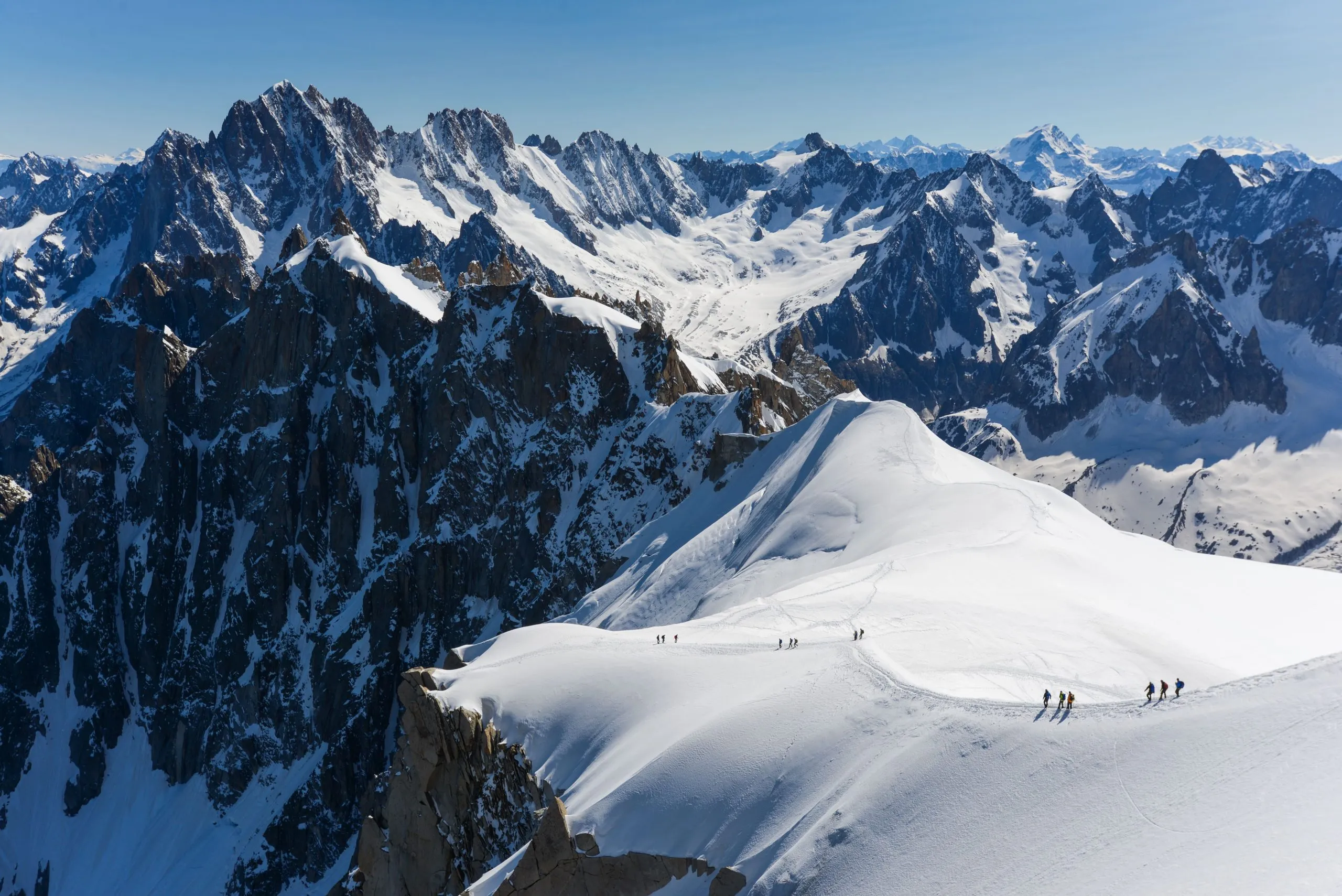
Grand Mulets Route
- Most popular Mont Blanc skiing route
- Only in good weather and very stable conditions
- Exposed to Serac fall
If you want to ski down Mont Blanc, then the Grand Mulets route is the way to go. This is the original straightforward route from Chamonix, on which the first Mont Blanc ascent was achieved in 1786.
It’s most popular to do it in spring, especially in April, among those who want to do ski touring on Mont Blanc. And if you are a master of Mont Blanc and you’re looking for a challenge, this route is also the one on which the up and the down Mont Blanc record was set — Kilian Jornet did it in just under 5 hours in 2013.
The route starts with a cable car ride to the Plan de l’Aiguille Mid station (Or if you’re extra ready, hike from Chamonix to the Junction at the start of the glacier). It then heads towards the Bossons glacier, which you’re gonna be crossing until the Grand Mulets Hut. After that, you have two options, both of which soon meet up with the Normal Route and the Bosses ridge which leads you right up to the summit.
Beware of the dangers of glacial travel! — both the crevasses and the ceracs.
Huts on the route:
- Refuge des Grands Mulets (3051 m)
Starting Point: Chamonix
Distance (one-way): 11 km
Elevation gain: 2500 m

Italian Route via Gonella Hut
- A difficult but scenic route
- Requires 1:1 guide ratio
- A quieter alternative to the other routes
This route was opened as a downhill in 1890 and is now the main route from the Italian south side of Mont Blanc. It is much less attempted than the routes from Chamonix, but that makes it even better since there are no crowds at all. It is also more challenging, with some stretches of rock scrambling and airy ridges.
Because of the warming climate, this route is nowadays mostly climbed in the first part of the season, when there is still enough snow in the lower sections of the hike.
The route starts in Courmayeur and ascends up the Miage glacier towards the Gonella hut, where mountaineers usually stay the night. From there it goes further on the glacier, climbing seracs and avoiding crevasses. The spectacular sharp ridge will lead you past Piton des Italiens, shortly after reaching the Gouter route, which it then follows to the Mont Blanc summit.
Huts on the route:
- Rifugio Francesco Gonella (3071 m)
Starting Point: Courmayeur
Distance (one-way): 15 km
Elevation gain: 3200 m
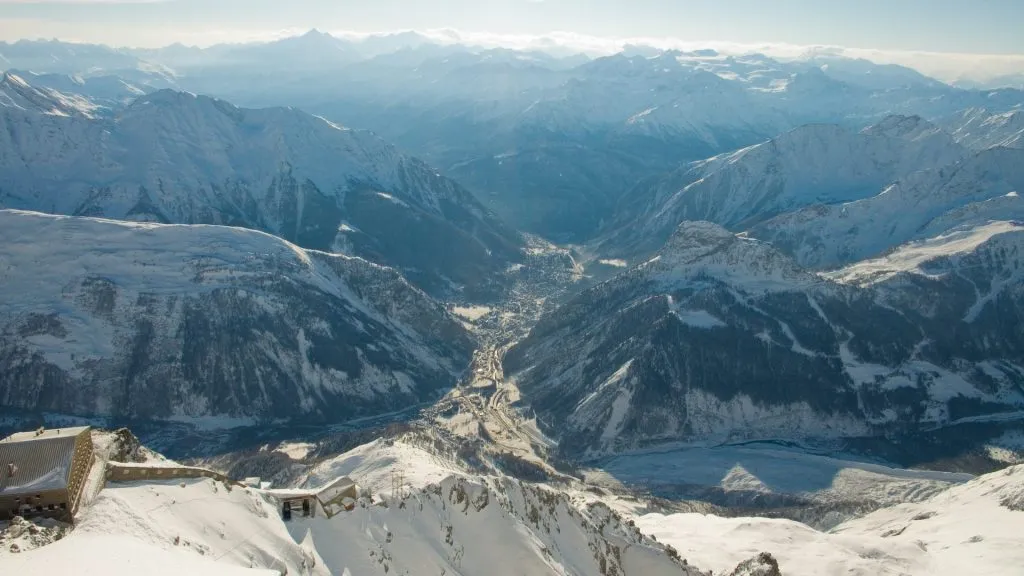
How to prepare?
Climbing Mont Blanc is not a walk in the park. You need to have the skills and the fitness, plus the right equipment to have the best chance to make it to the top. If any of these are missing, it just won’t work. You will have a high chance of injuring yourself, or even worse.
Equipment can be bought or rented, the need for climbing skills diminished by booking a guide, but fitness can only be trained. And it takes at least a few months, if not more. That’s why it should be the primary focus.
But even if you have all of the above, don’t forget about acclimatization. Attempting to climb Mont Blanc without it will in most cases not be possible. That’s why a multi-day expedition which includes previous acclimatization climbs is highly recommended.
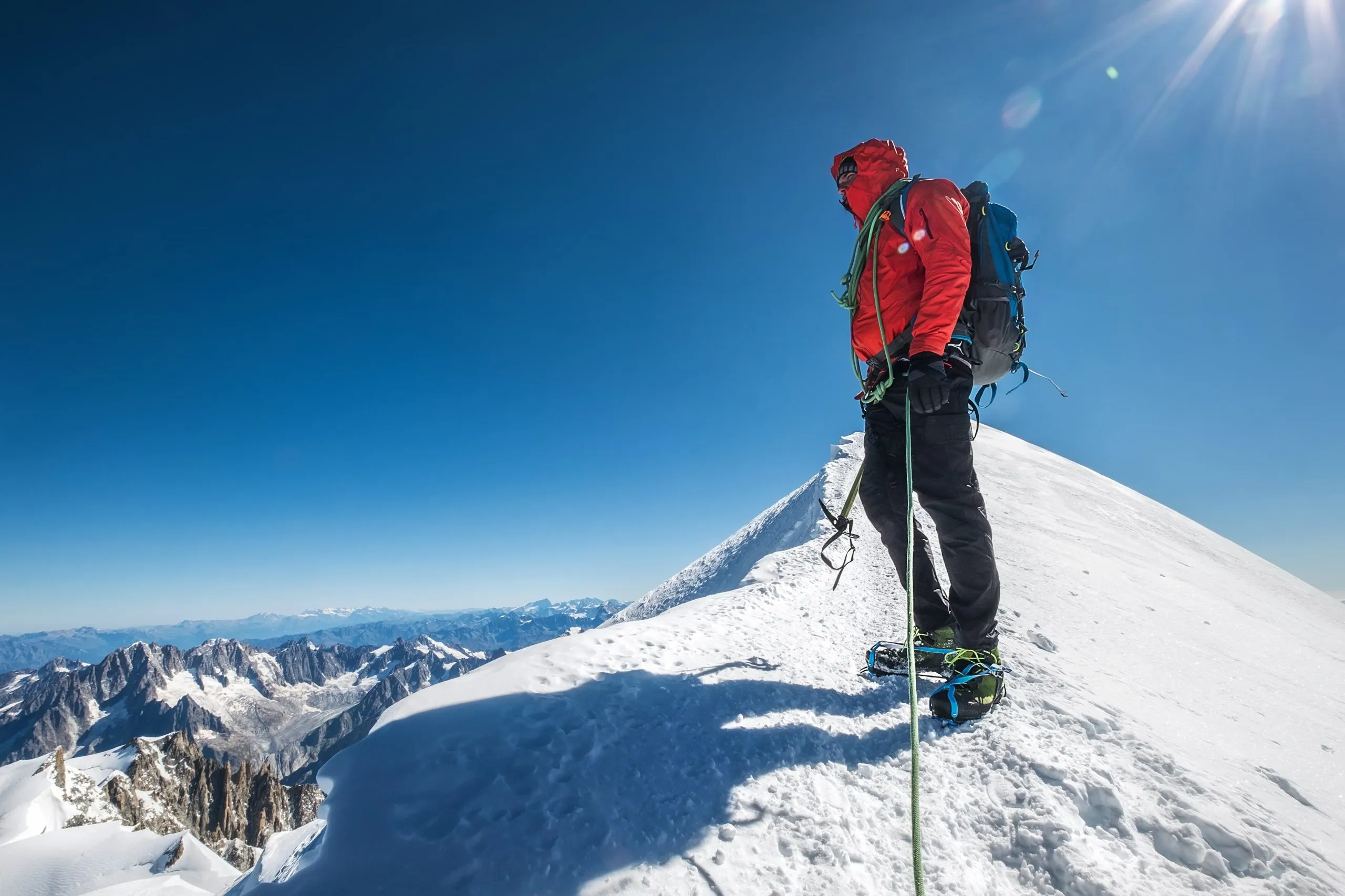
How fit should I be?
Those who attempt to climb Mont Blanc should have solid endurance fitness. That means being able to withstand a sustained effort for many hours straight. It’s not a sprint, it’s more like a slow marathon.
To climb Mont Blanc, you should be able to climb 1600 meters of elevation in winter without being too tired to do it again the next day. You shouldn’t will yourself up to the Mont Blanc summit. You always have to have some extra left in case of emergency. If you don’t, any emergency is too dangerous.
What climbing skills should I have?
It depends on the route you choose to take up to Mont Blanc. Let’s focus on the Normal Route, which is the most popular.
The terrain it includes is everything thing from regular hiking trails, glaciers, icy ridges, and steep and rocky slopes. You would need to know something about walking in crampons, ice axe self-arresting, the basics of glacial travel, and scrambling skills.
If you’re not already familiar with the above and also have a lot of previous experience with winter mountain climbing, booking a guide is the best option.
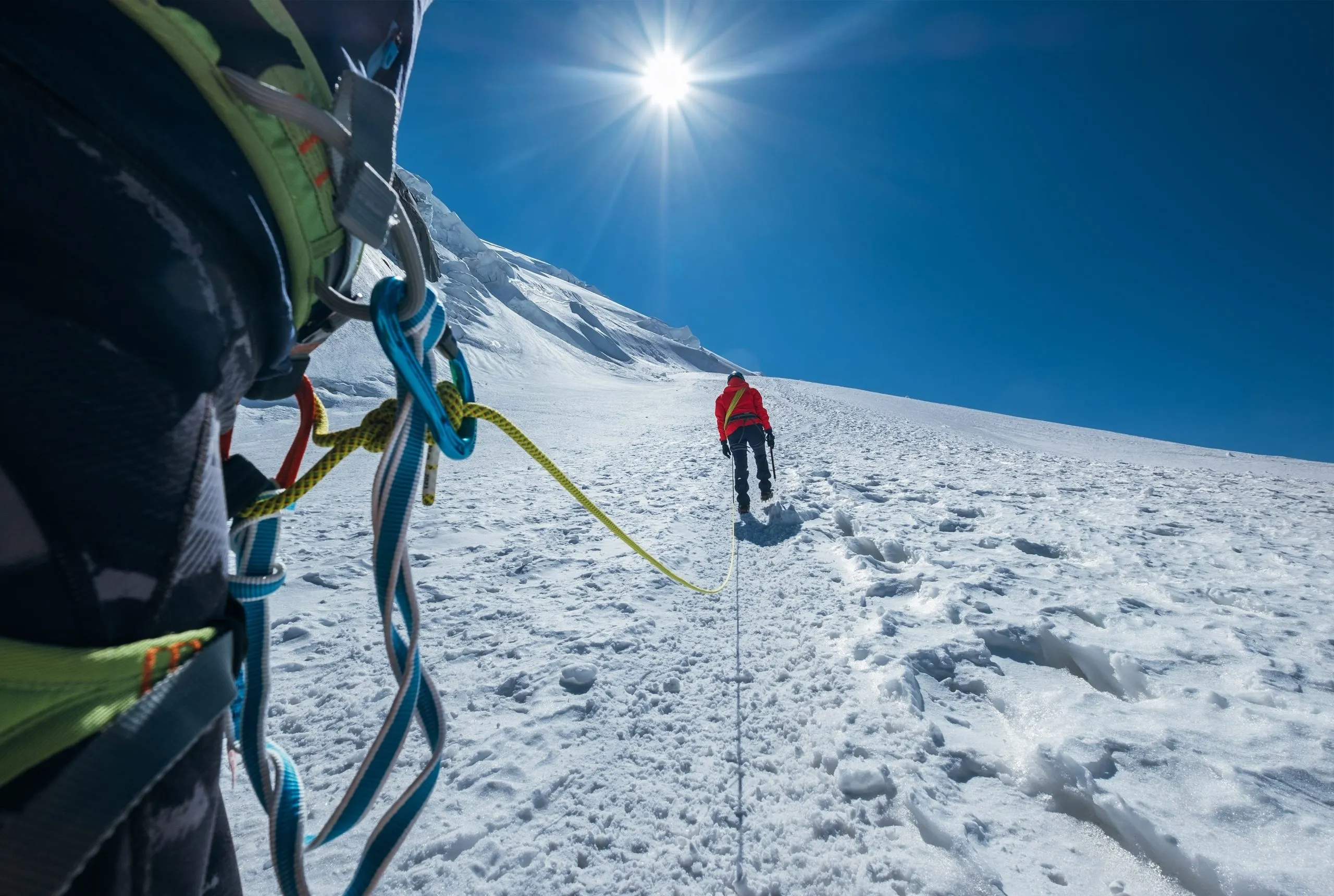
What equipment to take?
The gear list for climbing Mont Blanc should include many things. We could divide it into two categories:
- Technical equipment
- Clothing
The technical equipment is necessary for you to move around the snow-capped mountain. Crampons, an ice-axe, proper winter hiking boots and a great backpack are all needed to summit a mountain like Mont Blanc.
You should also take the right clothing. For mountain climbing, dressing in layers is key. That is especially true for Mont Blanc where the temperatures could be very warm at the start, and freezing cold at the summit.
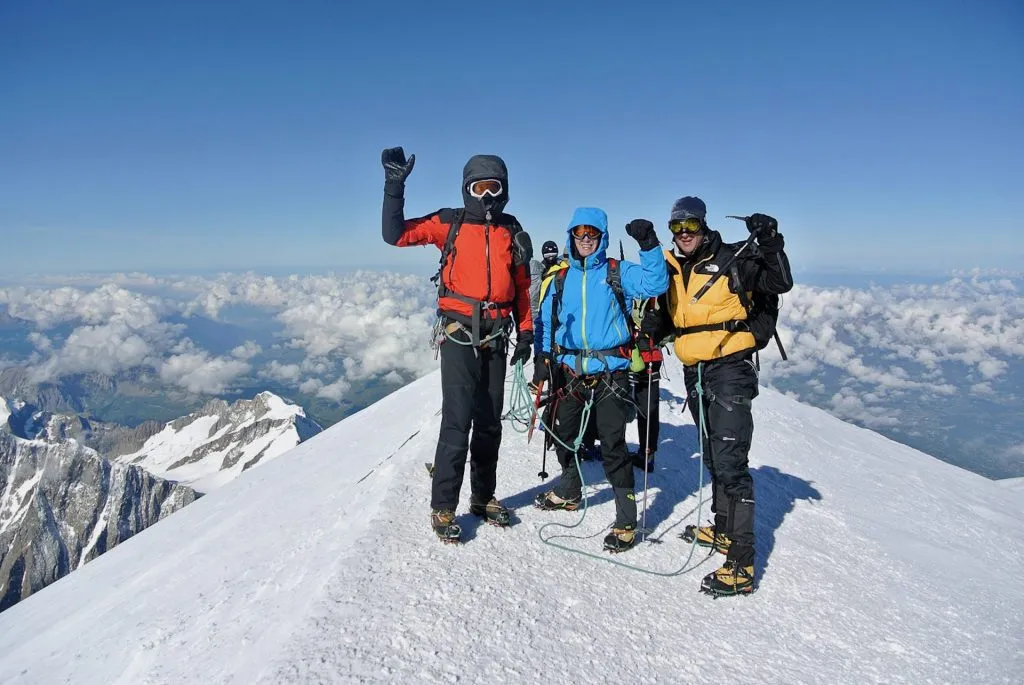
Should I book a guide?
If you’re an alpinist who has climbed plenty of mountains of all difficulties in all seasons, then no. But then you probably wouldn’t be reading this right now.
Here are the main reasons why you should book a guide:
- Safety and guidance: Any mountain guide that leads you to the top of Mont Blanc will have years of training and experience to make climbing Mont Blanc as safe as possible. He’ll also teach you the mountaineering skills you’ll need right there, so you don’t need to have previous winter climbing experience.
- Less stress booking the mountain huts: Huts on the busy Mont Blanc routes are always full. Any professional guide has premium access to their booking system and takes care of that for you, so you don’t have to worry about it.
- Higher chance of making the summit: A guide has the skills, the knowledge and the experience to make sound decisions that result in more successful summits and a minimal chance of accidents.
In short, if you haven’t climbed similar mountains to Mont Blanc before, then book a guide.
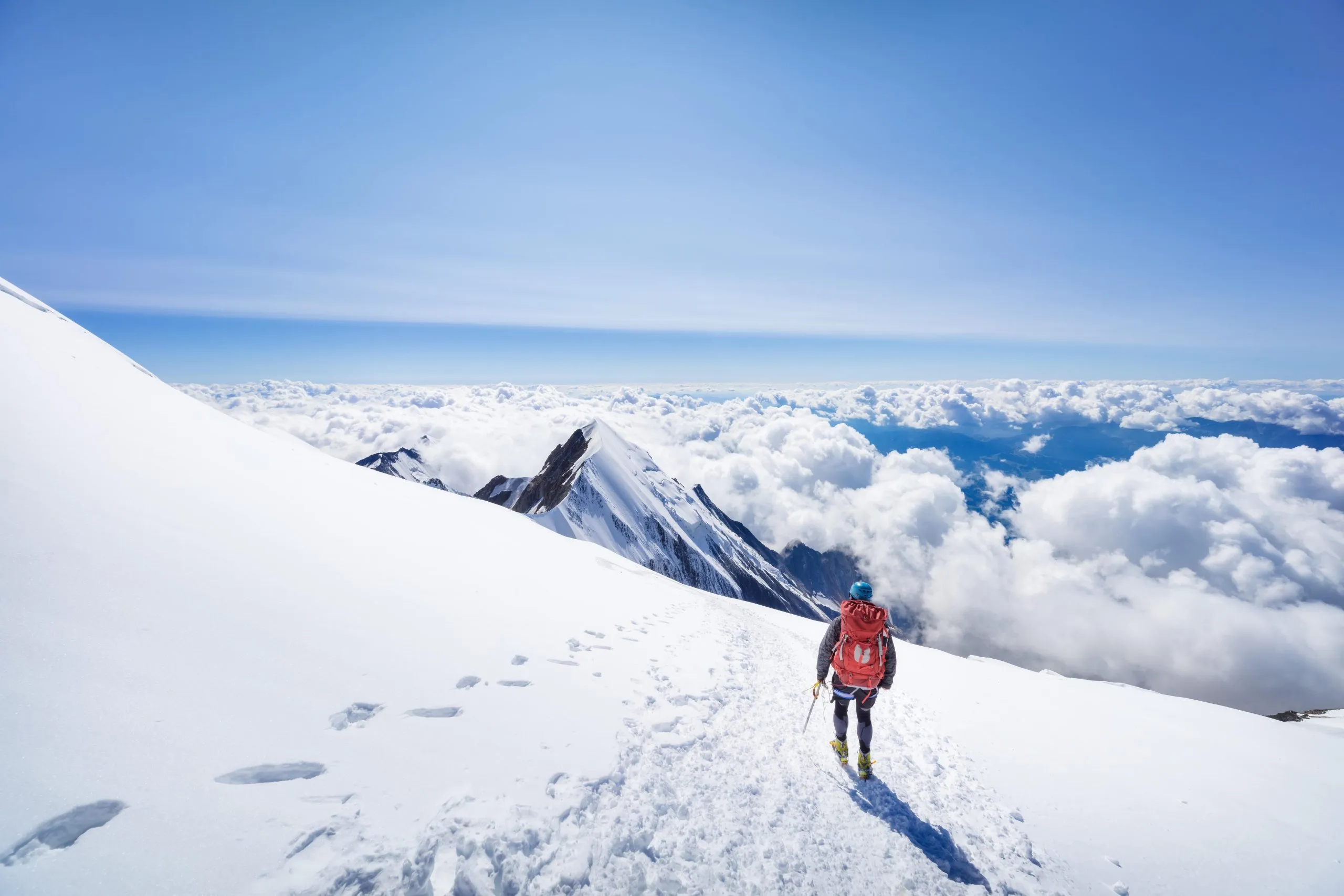
How much does climbing Mont Blanc cost?
It depends on the number of days the expedition takes. If you book only a two-day Mont Blanc, then it costs less.
But then you need to then do an acclimatization climb on your own. The cheapest is to buy a multi-day expedition that includes it all, rather than pay for them separately.
For those kinds of programs, the price should be anywhere from 2000 to 3000 euros. It depends on what the program includes. There could be a lot of hidden costs like cable car and tramway tickets, transfers, food and more.
If you don’t want to worry about any of those extra costs, check out our all-inclusive 6-day Mont Blanc expedition. It not only includes everything necessary for a Mont Blanc climb; You’ll also have a chance to summit the highest peak of Italy — Gran Paradiso!




